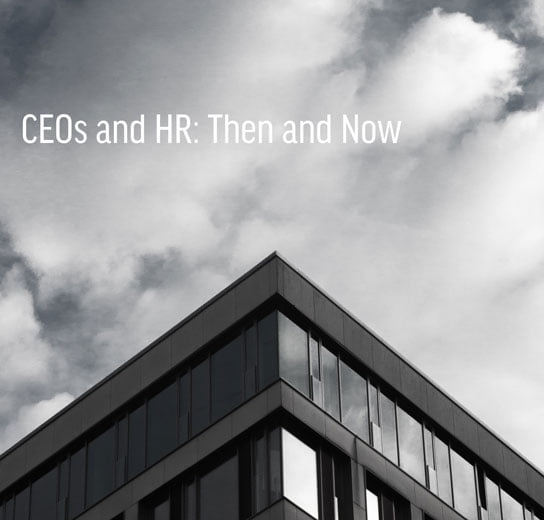
China Gorman measures the progress of CEOs owning talent and culture-related progress in their organizations.
In 2013 I wrote a pretty popular piece on my blog titled, Memo to HR. It was about how CEOs were stepping up and owning talent- and culture-related progress in their organizations – and HR needed to be prepared. Recently, I was looking at that post and reviewing the list of signs that a CEO was becoming a talent champion (although I didn’t label it that then), and thinking that the progress I was describing in 2013 is only beginning to take off now. Here is what I wrote 5 years ago:
“I’ve met and talked with a number of CEOs lately. CEOs from Fortune 200 companies, medium-sized companies and start-ups. I’ve been struck by the conversations we’ve had. Because in each case, these CEOs exhibit many of the behaviors HR pros are looking for from their CEOs.”
Here are the 7 signs I identified back Then with current observations of what is happening Now:
- Then: Talent acquisition/development comes up early in a conversation about their top challenges. Now: Talent comes up no matter the topic of conversation these days. Successful CEOs are hyper-focused on talent issues pretty much all the time.
- Then: They have done reading – or in some cases, writing – about corporate culture and are actively involved in leading a change in their organization’s culture. Now: Creating successful cultures that attract, support, and retain the talent they need is job #1 for many CEOs. And the more successful CEOs in this regard are being tapped to speak at conferences, give TED talks, and lend their names to books on the importance of culture in attracting, developing and deploying talent for business success.
- Then: They have embraced the research of an OD or culture expert/guru whose work they are integrating into their culture and language. Now: CEOs are creating C-level jobs to keep the heat and focus on creating cultures that actually match stated values. (This may be a bit of a fad, but until all C-suite leaders are held accountable – really accountable – for culture and behavior, this isn’t a bad solution.)

China Gorman, HRExaminer Editorial Advisory Board Contributor.
- Then: Succession planning is among the top issues on which their leadership team is working. Now: It’s not just the C-suite. The Board is becoming involved with more than just CEO succession.
- Then: Employee engagement is critical to them. They know the scores of their organization’s most recent employee attitude survey and are peering over the shoulders of their leaders to ensure the opportunities for improvement are moving forward — in line with the culture change work they’re leading. Now: Still true. And they are looking for more daily feedback than once-a-year feedback. Employee engagement is more critical to them than ever.
- Then: Supervisors/managers are measured by how well they manage the performance and development of their people. Now: Forward-thinking CEOs are supporting a myriad of new – even radical – systems for performance management, while stepping up expectations for skills development and stretch or promotional opportunities. The Baby Boomers aren’t going to be around much longer and the internal talent pipeline is not very robust in many organizations.
- Then: Diversity/inclusion enters the conversation early when talking about culture. Now: Diversity/inclusion are part of nearly every talent and culture conversation. The current focus on sexual harassment has only intensified this focus.
From my vantage point today, most of these 7 signs are gaining strength. And I’d add a couple more that, ironically, may seem at odds with each other:
- Education and skills training are rising to the level of CEO consciousness today with some urgency. As CEOs plan for the future of their businesses and workforces, having the right skills, where and when they need them are the strategic building blocks of survival.
- Artificial Intelligence and Robotics are coming and are surely going to be disruptive – especially to workers whose jobs will be eliminated. CEOs who are working now with their leaders (not just HR) to map the timelines, locations, functions, and jobs being disrupted will be significantly ahead of the game in the years (or months!) to come.
The primary point of the post in 2013 was the observation that CEOs were moving into HR’s realm: “more and more CEOs are ‘getting’ the fact that people and culture are critical to business success.” And the fundamental question was whether HR was making “movement into the fact and data-based world of the CEO?”
It’s 5 years later. Traditional HR and talent issues have moved from HR to the C-suite and are continuing their upward trajectory to the board room. The question remains open whether HR is making that same movement.











